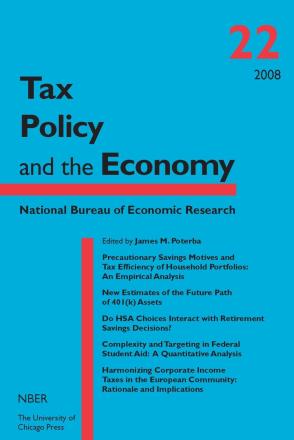Precautionary Savings Motives and Tax Efficiency of Household Portfolios: An Empirical Analysis

Theoretical portfolio models with taxable and tax-deferred savings require savers to locate higher-tax assets such as bonds in their tax-deferred retirement accounts (TDAs) while keeping low-tax assets (equities) in taxable accounts. Yet, observed portfolio allocations are often not tax efficient. This paper empirically evaluates one of the explanations for this puzzle that rests on the simultaneous presence of uninsurable labor income risk and limited accessibility of TDA assets. Together, these elements lead some borrowing-constrained households to forgo tax efficiency in favor of allocations that provide more liquidity in bad income states—an outcome labeled as precautionary portfolio choice. The analysis of household-level portfolio data from the Survey of Consumer Finances suggests that both the choice of whether to hold a tax-efficient portfolio and the degree of portfolio tax inefficiency are related to the presence and severity of precautionary motives.
-
Copy CitationGene Amromin, Tax Policy and the Economy, Volume 22 (University of Chicago Press, 2008), chap. 1, https://www.nber.org/books-and-chapters/tax-policy-and-economy-volume-22/precautionary-savings-motives-and-tax-efficiency-household-portfolios-empirical-analysis.Download Citation


